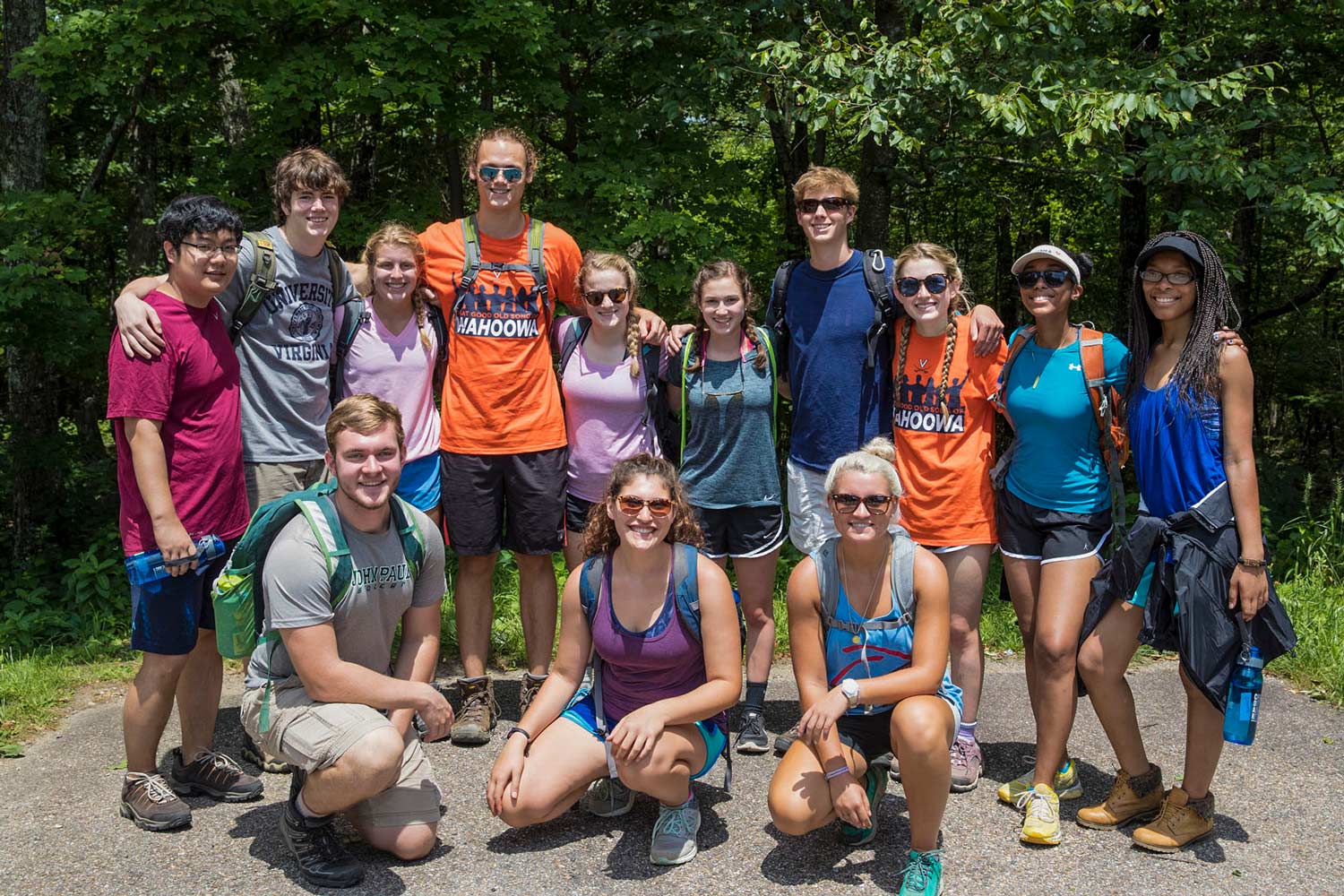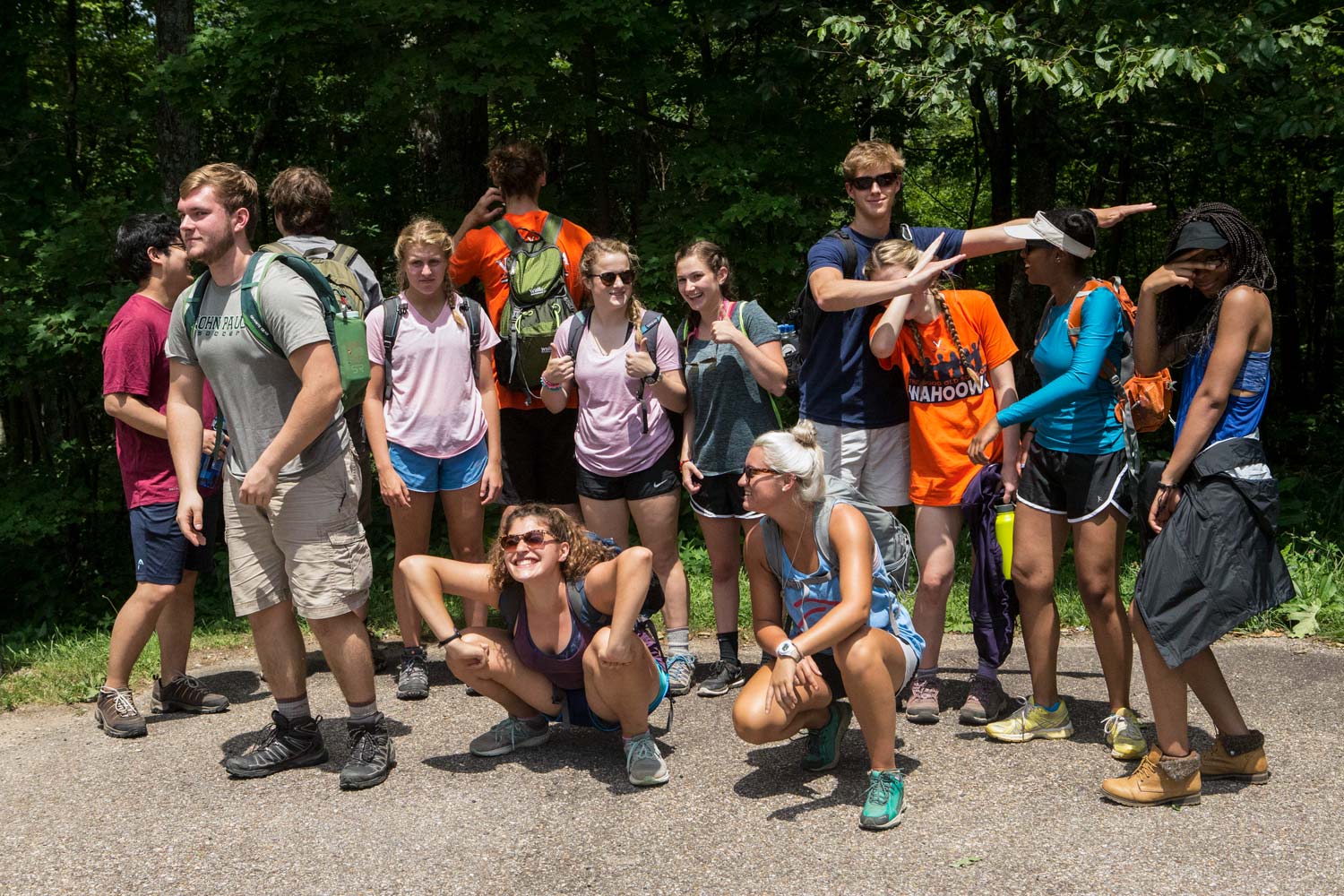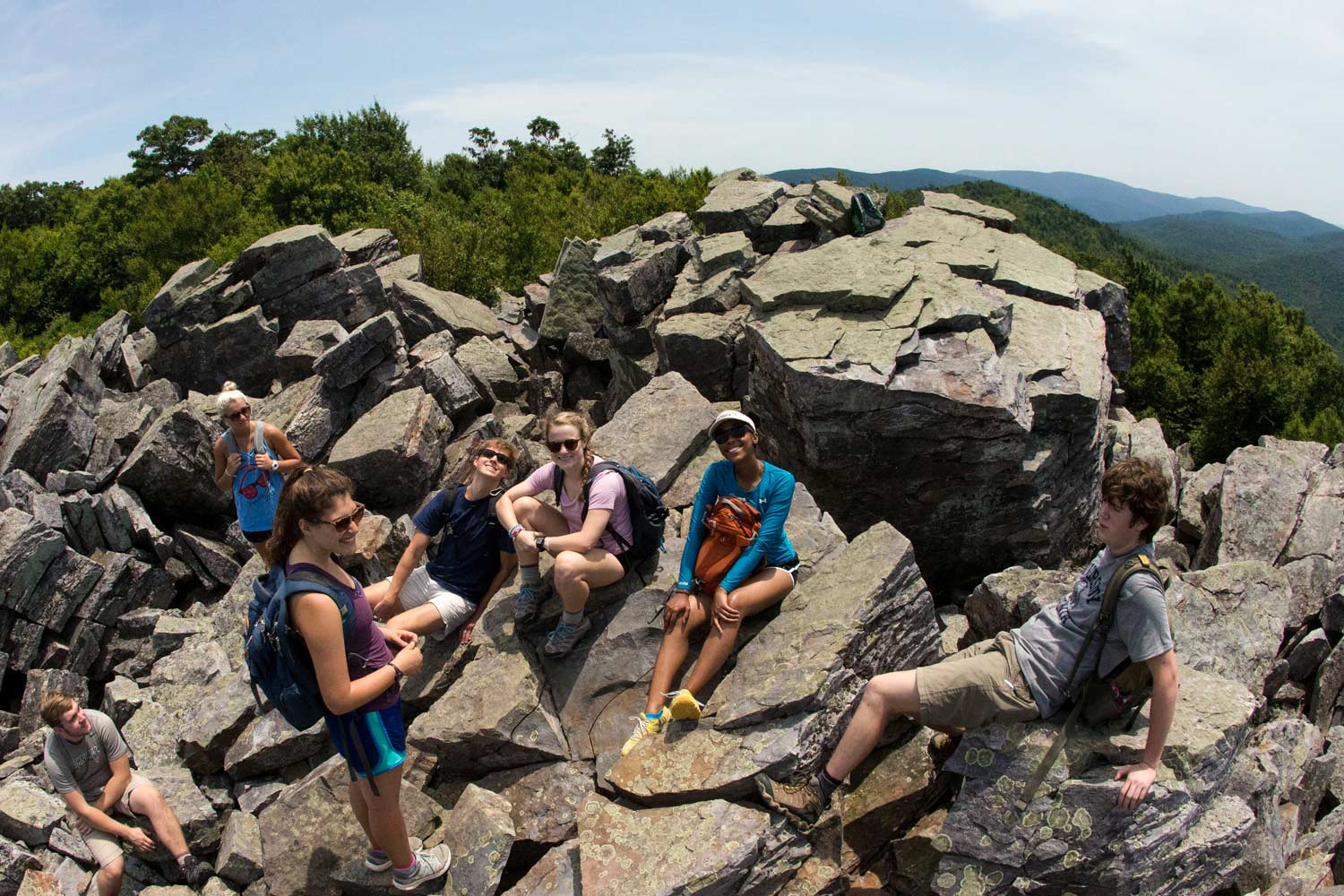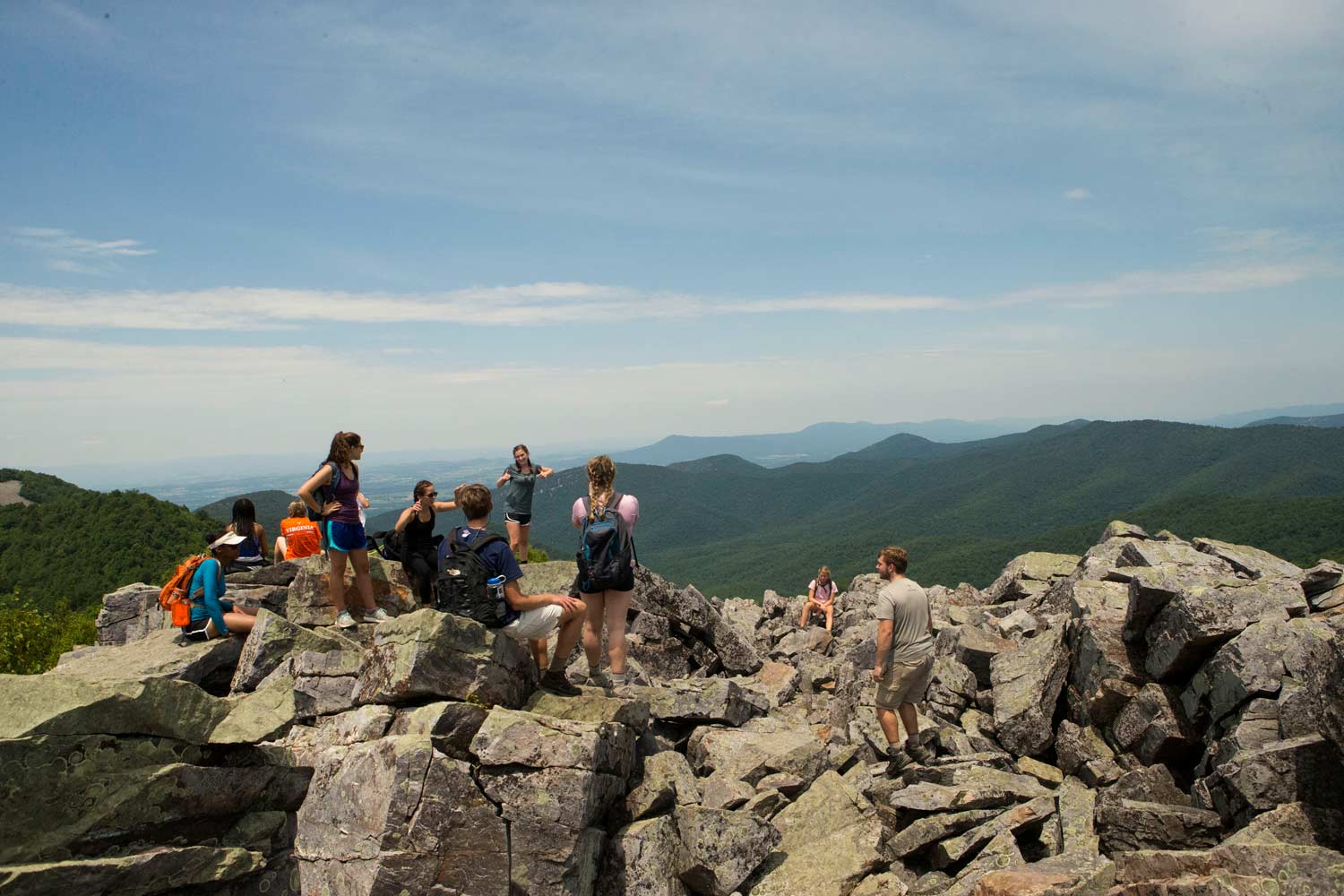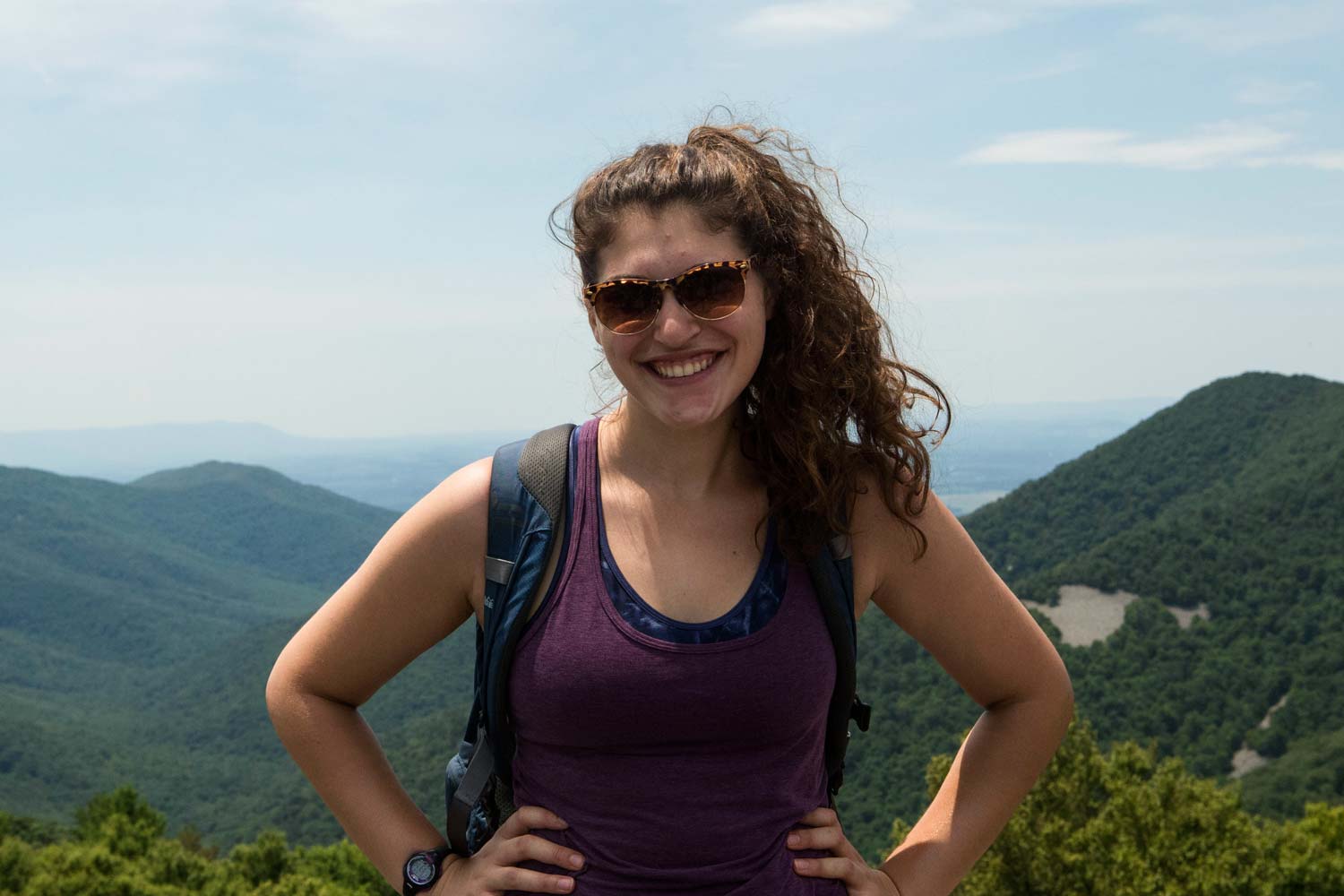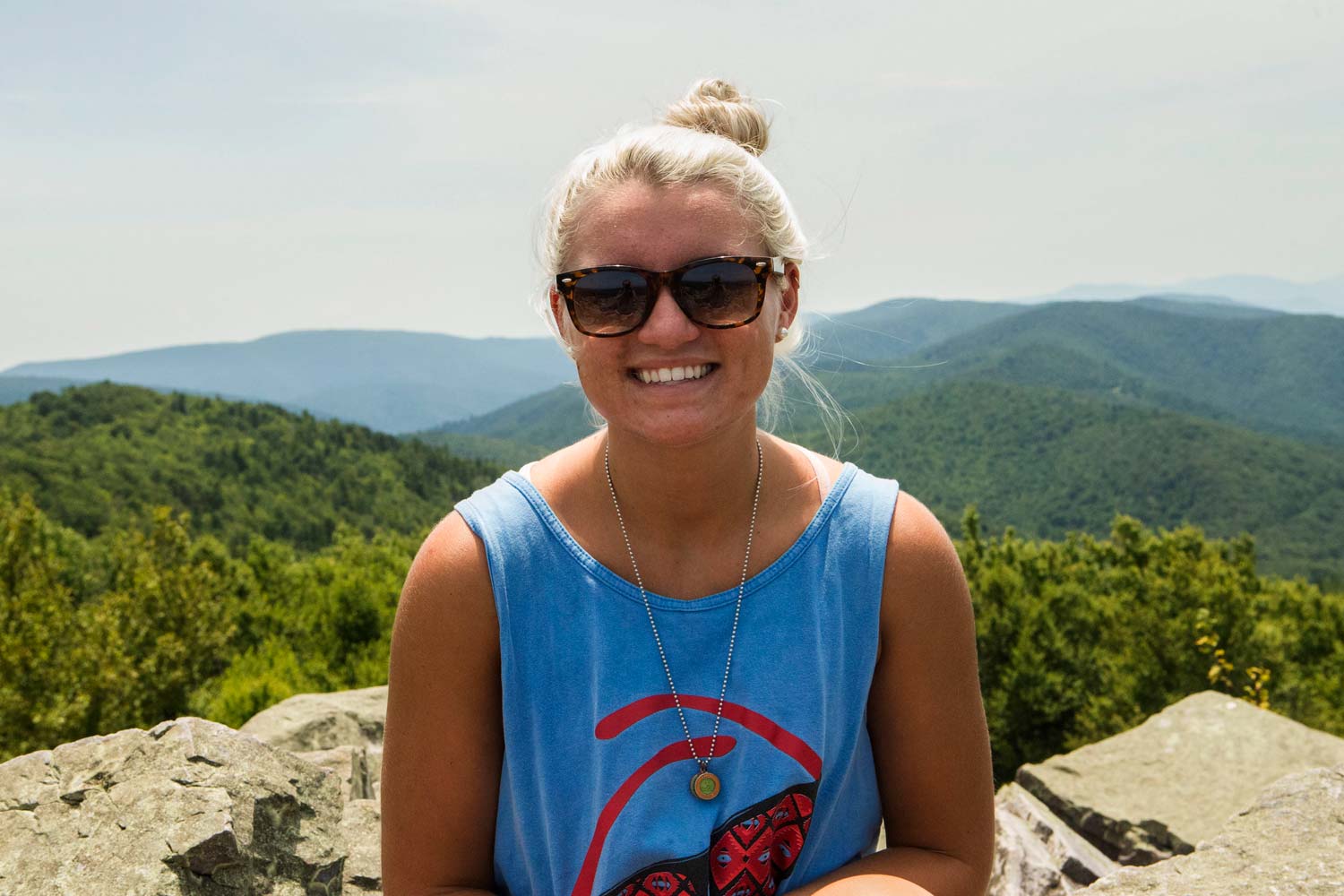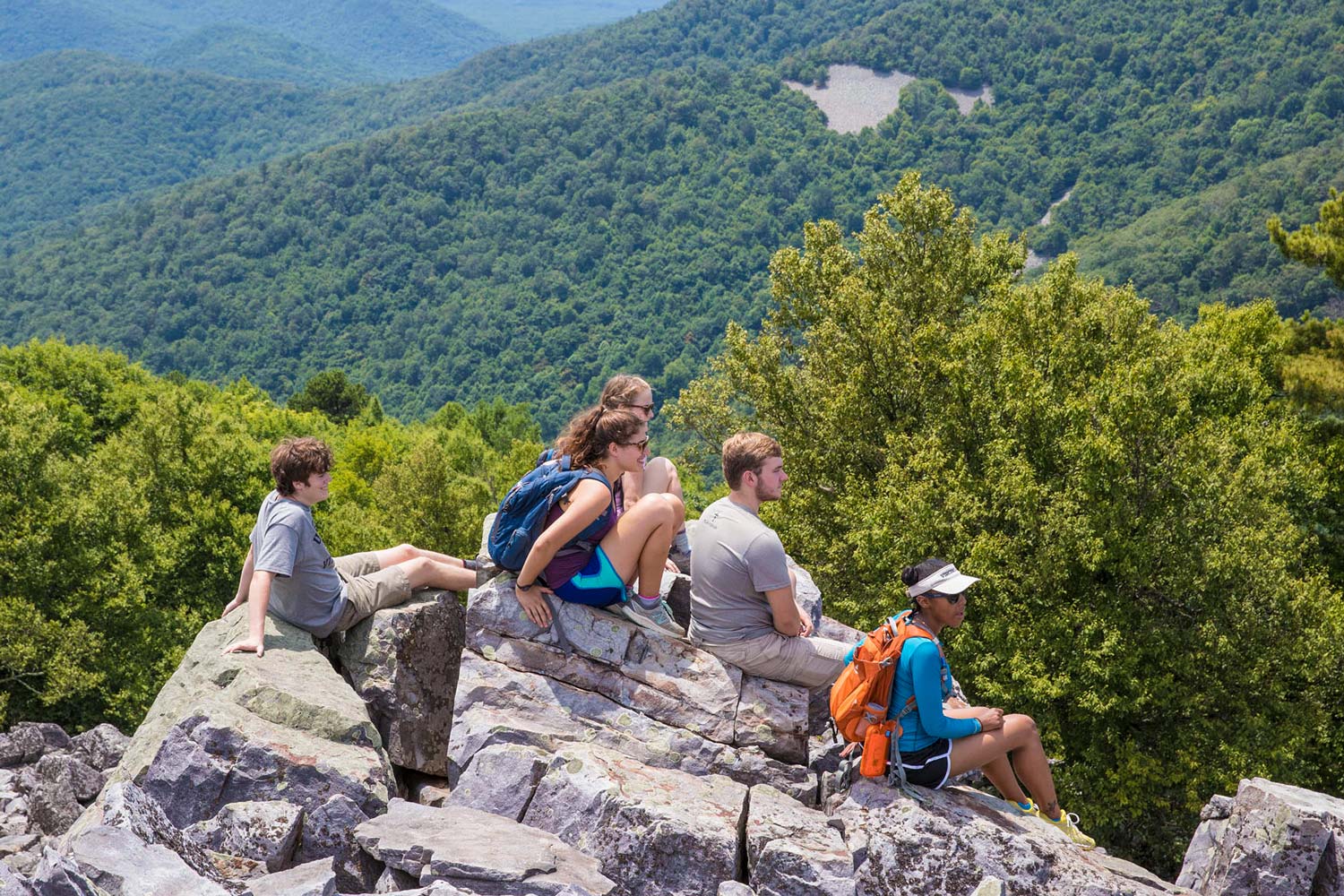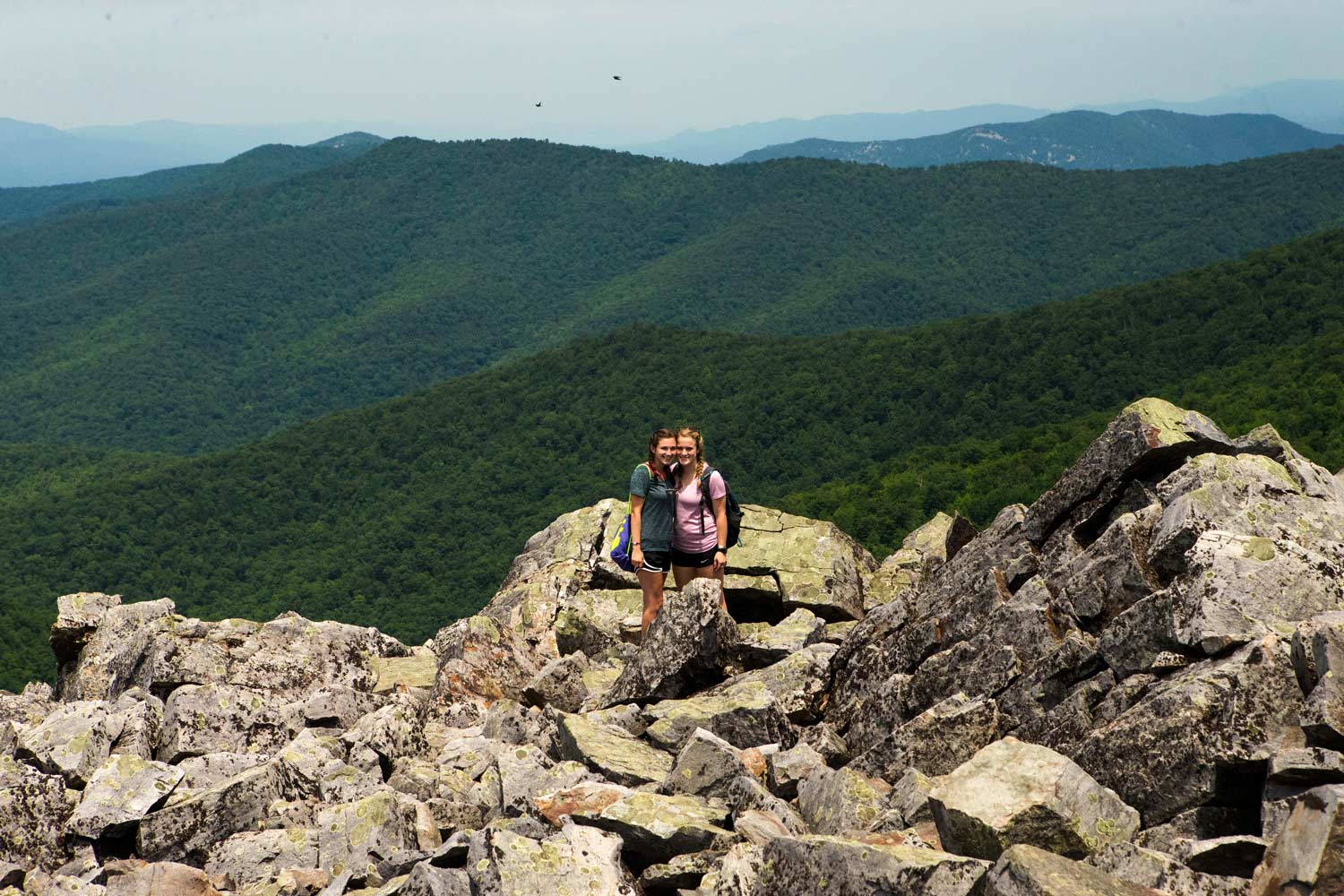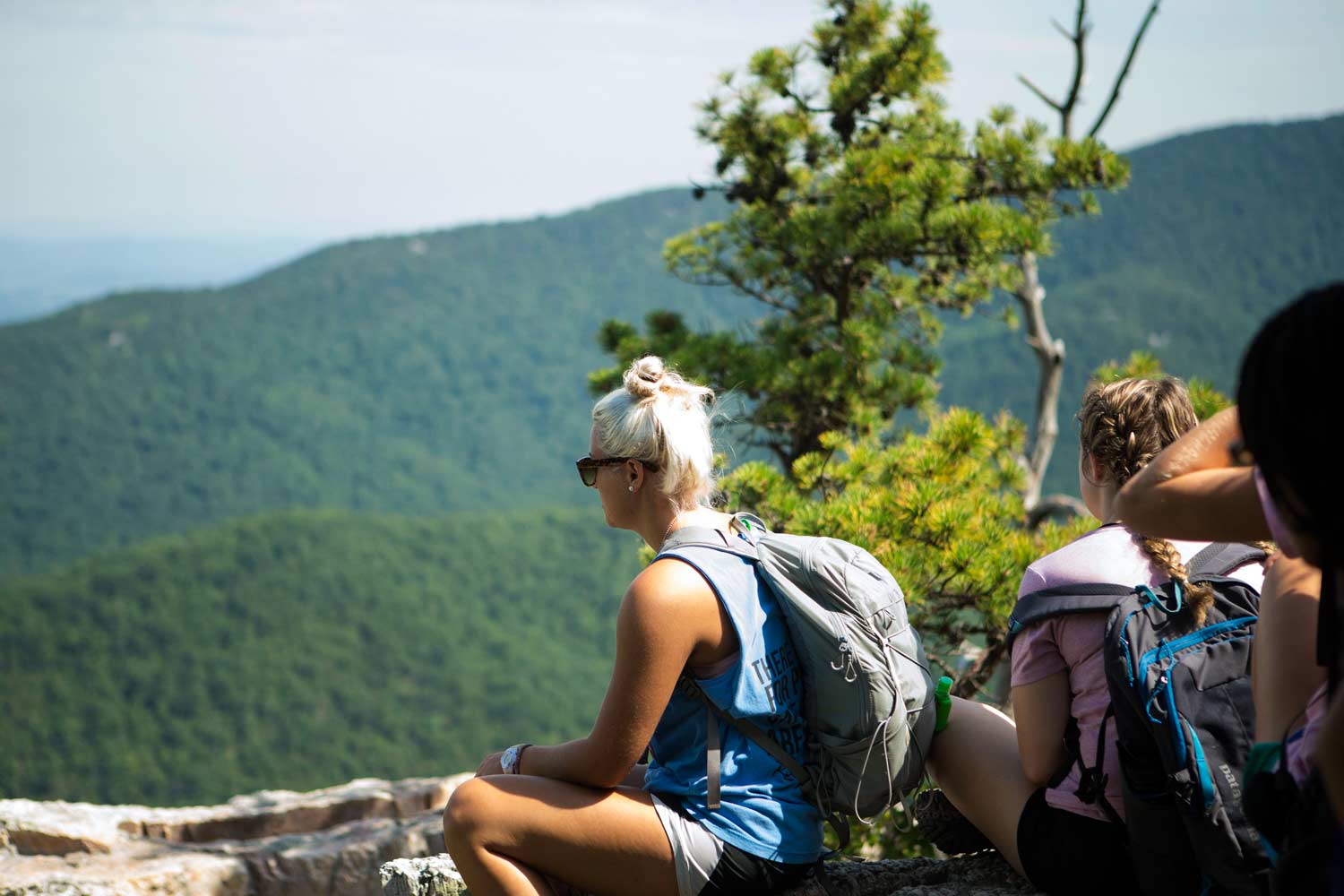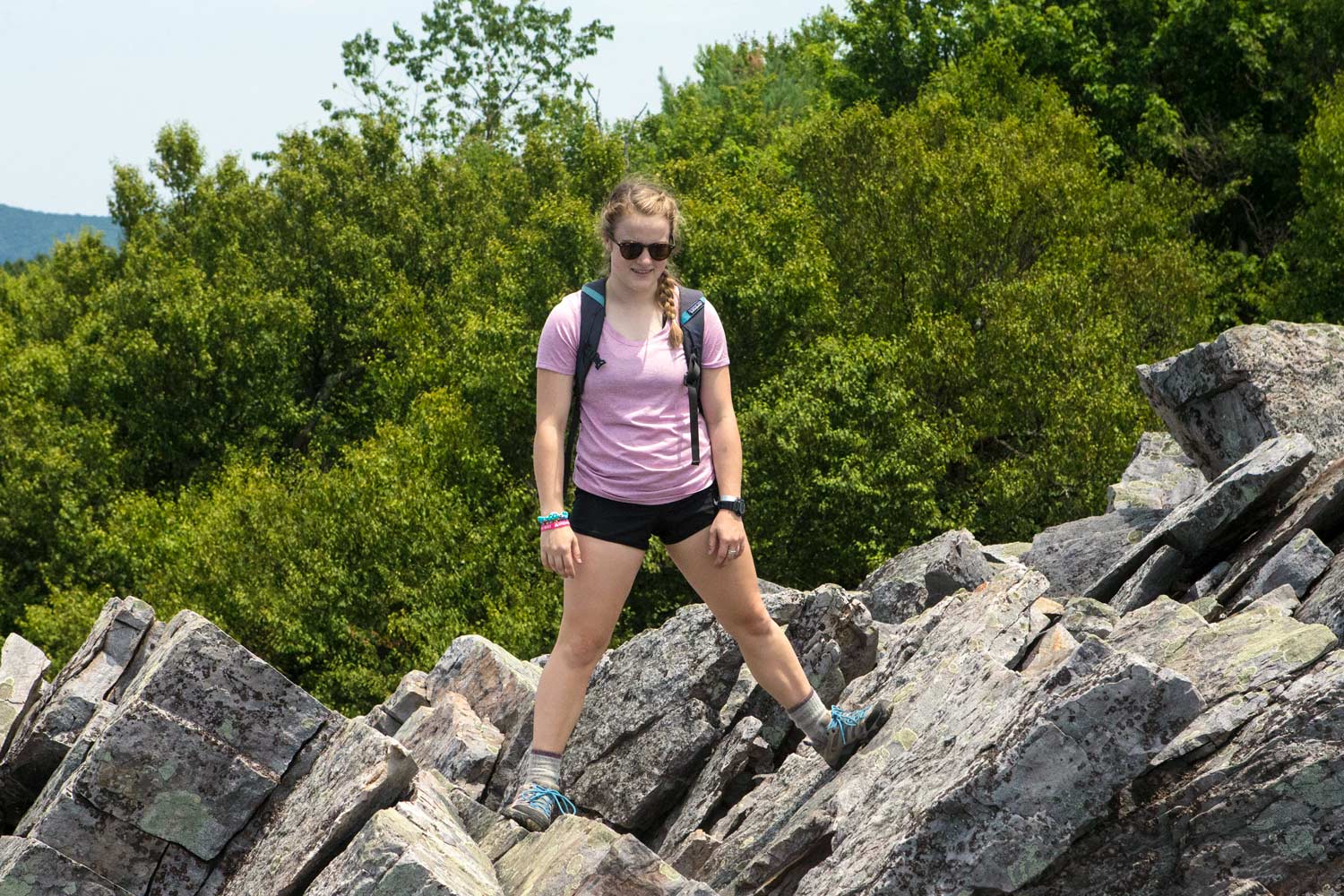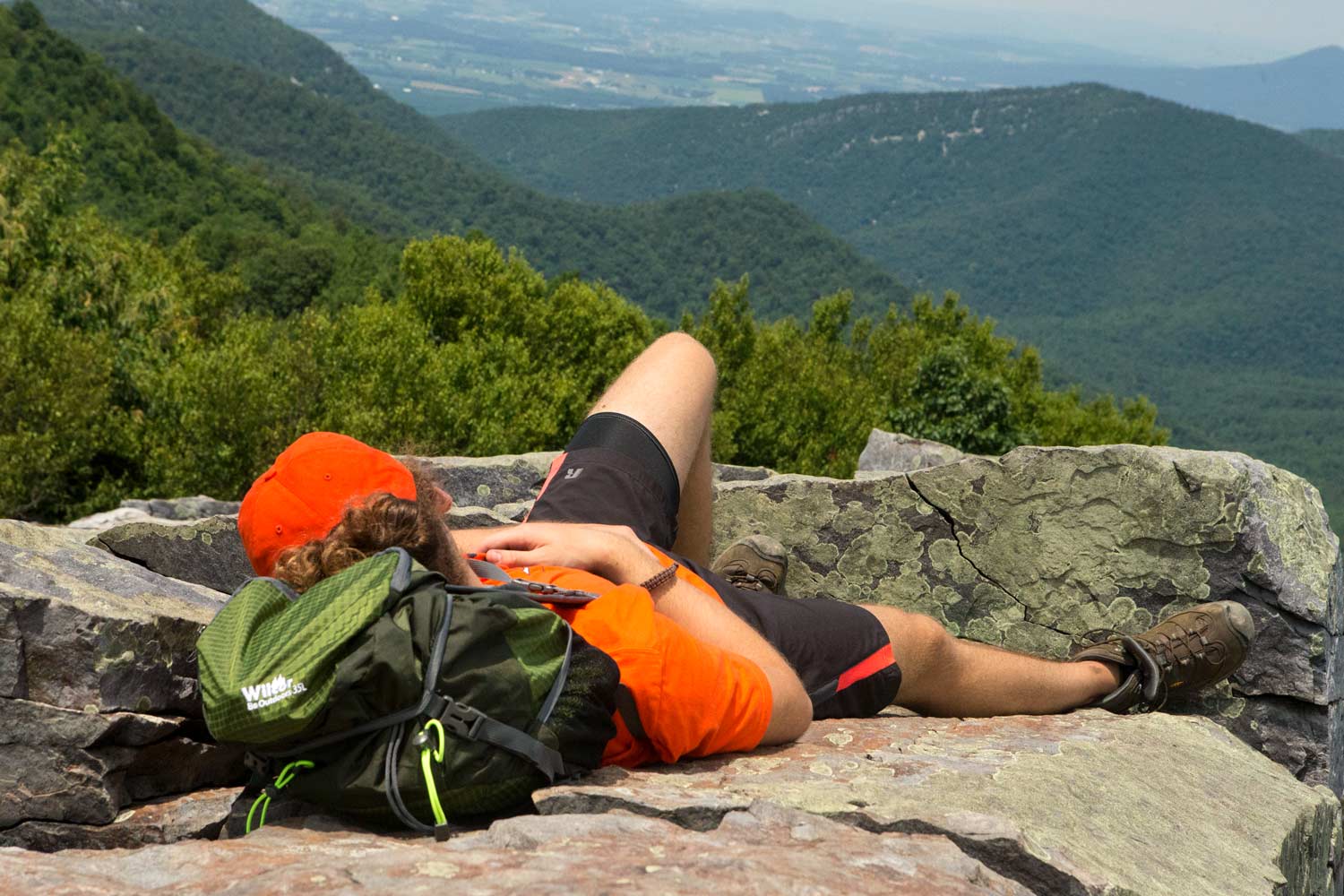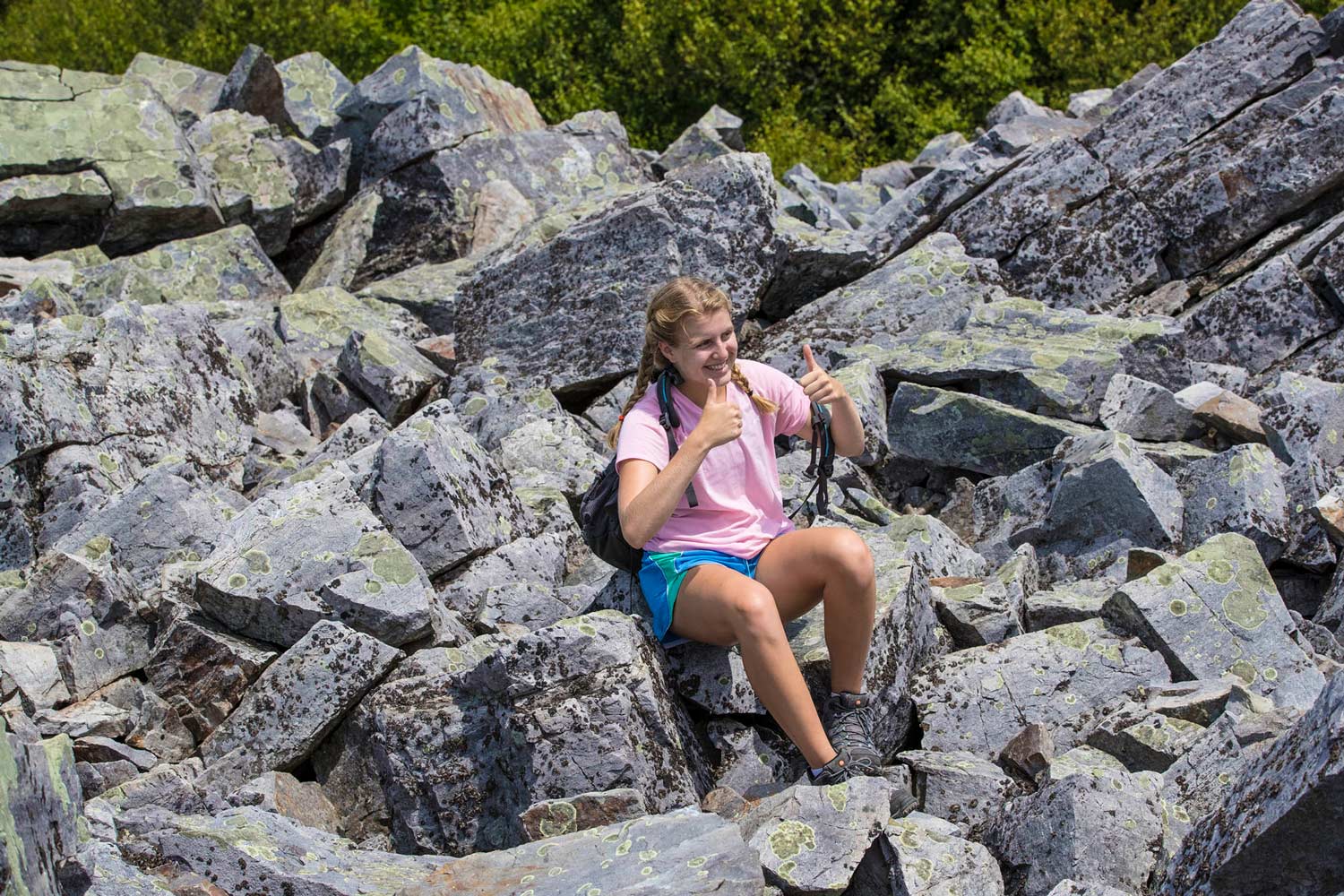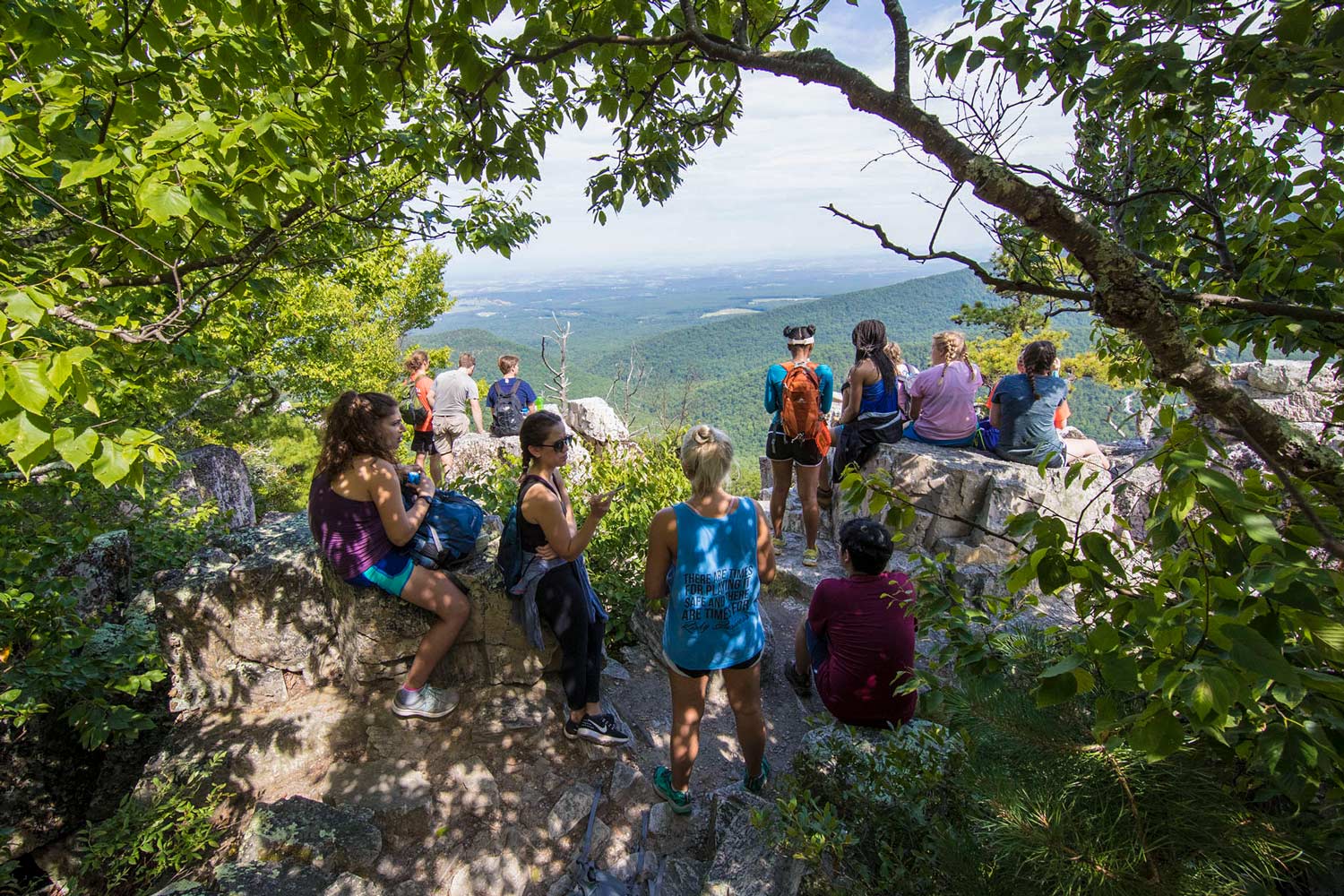For most incoming first-year students, summer orientation marks the beginning of a new chapter: choosing classes, familiarizing yourself with the University of Virginia’s Grounds and learning more about the place that will become home for the next four years.
But for students participating in the Cavalier Outdoor Adventure Retreats, or COAR, orientation is just the beginning of an unforgettable adventure.
COAR is as an optional extension of orientation in which students participate in a three-day camping excursion to Shenandoah National Park. The program is designed to allow students to get to know one another as they participate in breathtaking hikes overlooking the Shenandoah Valley, spend quality time camping in a primitive cabin and forge friendships even before the beginning of classes.
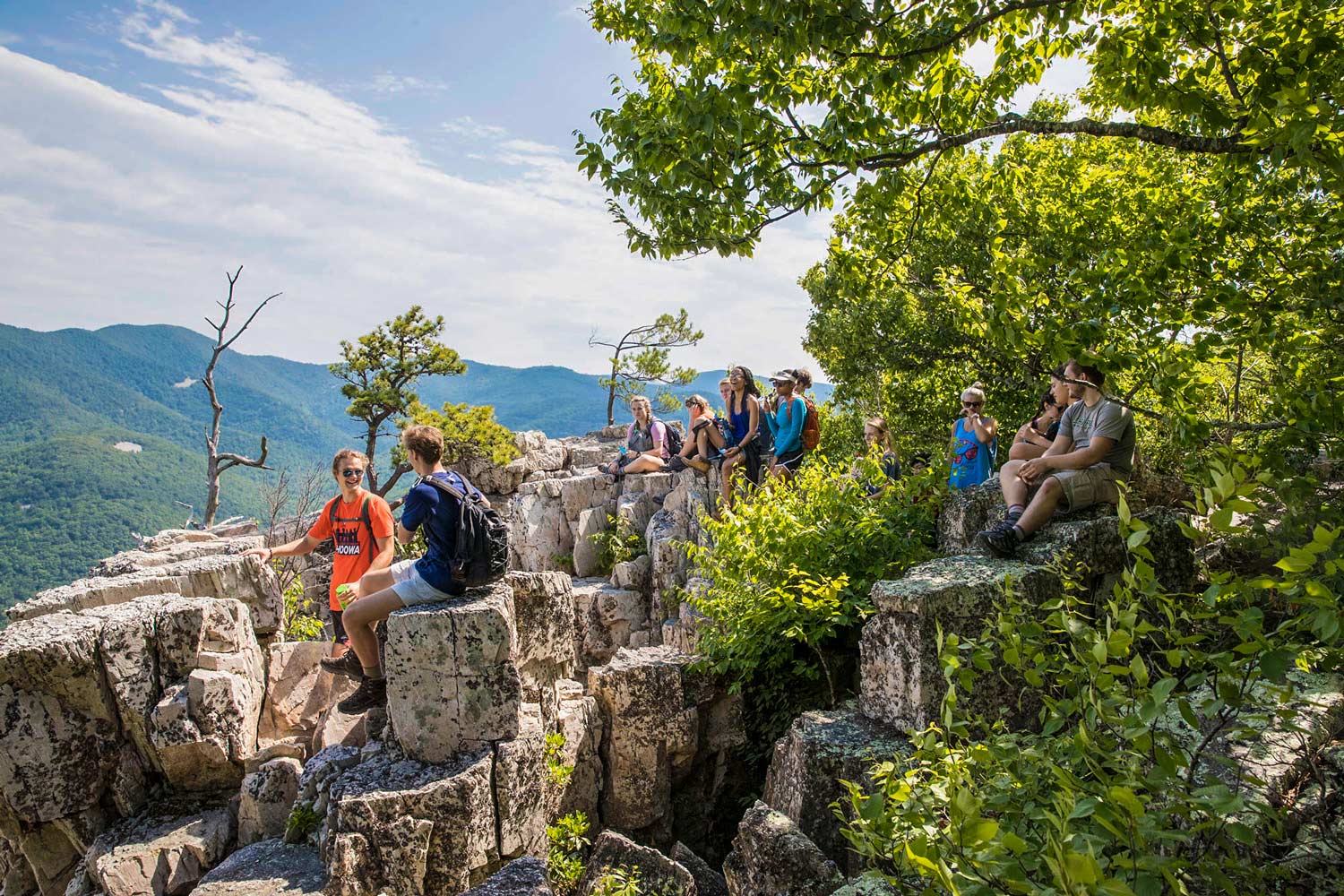
Students admire the Shenandoah Valley. (Photo by Dan Addison, University Communications)
Since debuting as a pilot program in 2015, COAR has become an increasingly popular option among first-year students. During its pilot year, the program offered only 30 spots, split into three different trips. The program was so successful that by the next year, spots more than doubled. This summer, a COAR trip follows all eight orientation sessions, and the number of spots offered has risen to 80.
“This year, all COAR spots filled up in about a month, compared to two months last year, and we have a lot more people on the waitlist,” said John McCall, director of outdoor recreation at Intramural-Recreational Sports.
Part of the program’s success is that it offers the perfect opportunity to make friends in an environment where students are not distracted by everyday circumstances, he said. Students get a fair amount of downtime between hikes and while they are cooking meals, allowing them “to really start to unwind and focus on building relationships with their peers, which helps their transition to college as they have that network.”
“During orientation you’re only meeting people for 30-second segments, so you don’t really get to know anything about them,” incoming first-year Jake Edwards said. “COAR gives you a chance to meet a small group of people on a deeper level.”
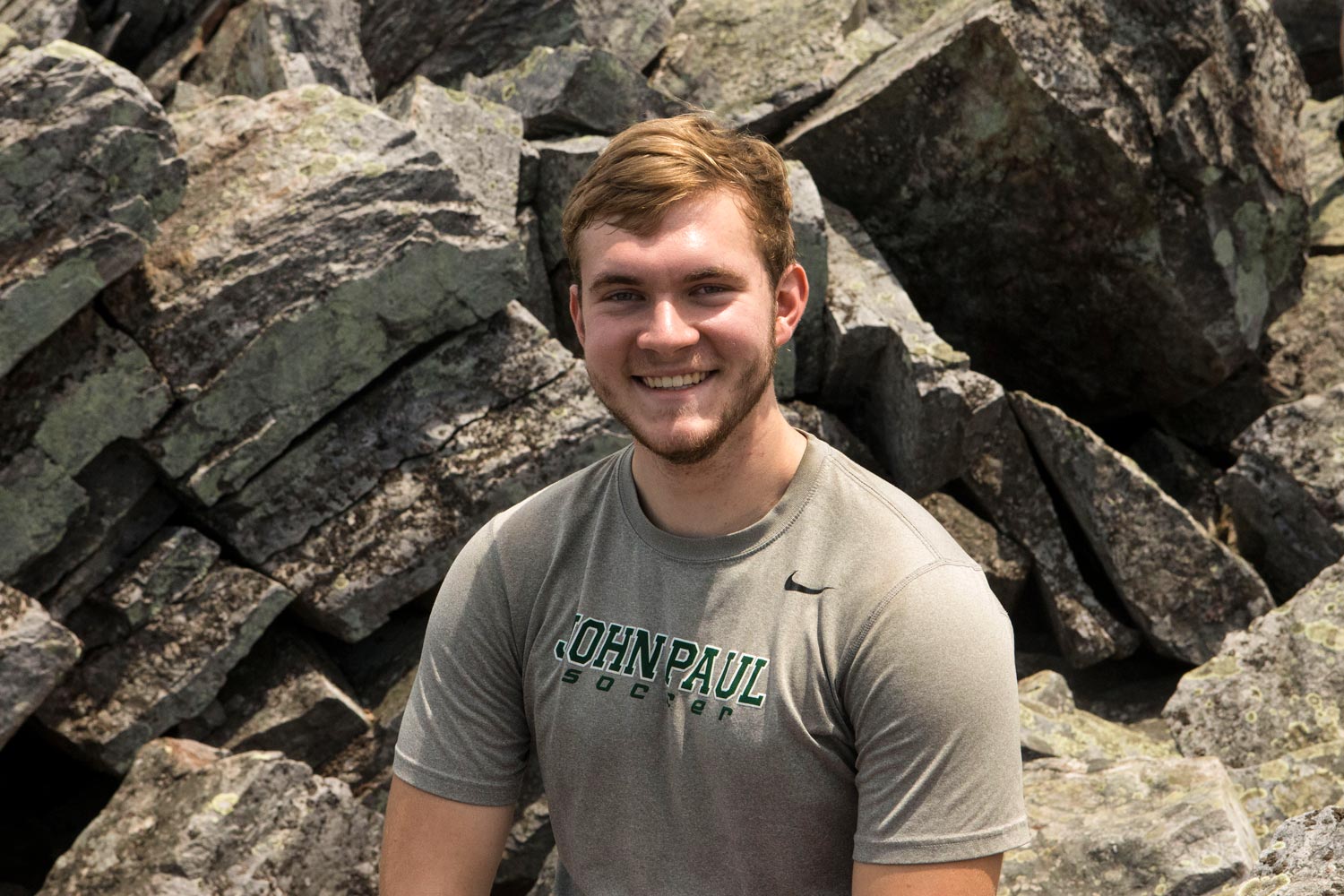
First a participant, Will Schaefermeier returned to the COAR program as a student leader. (Photo by Kathleen Bianchetto, University Communications)
Although McCall coordinates the program, he does not attend any of the trips. In UVA’s tradition of student self-governance, COAR trips are completely student-led. In fact, many of the student leaders planning this year’s trips also participated in the program before their first years.
Rising second-year student Will Schaefermeier knew he wanted to lead a program the second his own COAR experience ended.
“It made such a big impact on me,” he said. “Everyone in the group got so close, and we still get lunch and remain close friends.”
The student leaders go through intense wilderness first aid and CPR training to be prepared for any situation.
“While it is a lot of fun to lead the incoming students and offer them advice, you’re also in charge of protecting them,” student leader Logan Barley said, “so training made us all take a step back and take it all very seriously.”
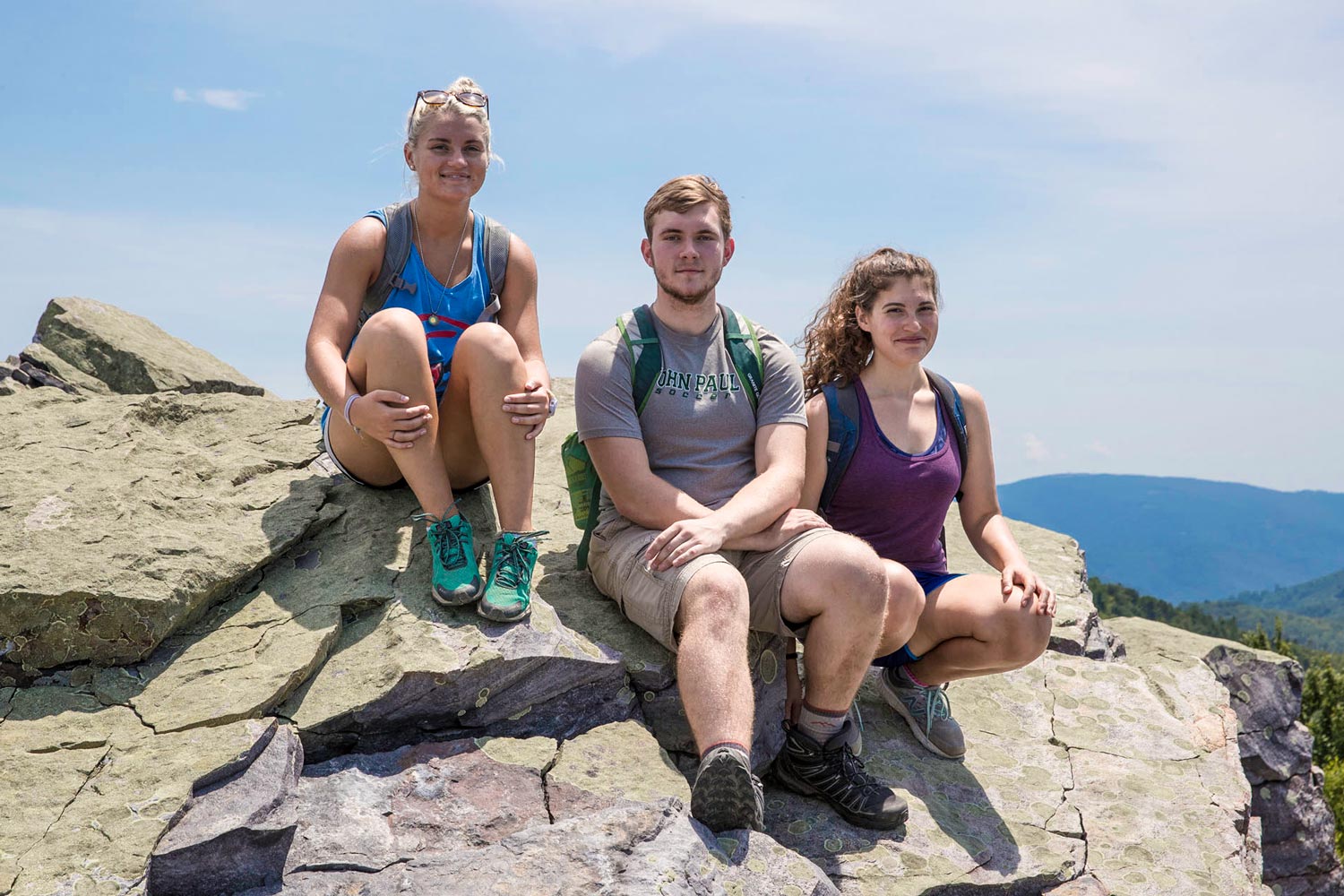
These student leaders also participated in COAR before their first years. (Photo by Dan Addison, University Communications)
All incoming first year-students, regardless of their previous outdoor experience levels, can participate, and IM-Rec has sought to reach out to as many students as possible. A fee waiver program – supported largely by donations from parents of previous participants, as well as a 2015 Jefferson Trust grant – is available for students with financial need. The IM-Rec office provides all backpacking and camping-related equipment, including food, so participants need only bring clothing and footwear.
This year, the program added an extra trip for international students, who often do not arrive for orientation until just before classes begin. Their trip will take place in September, once they have a chance to settle in after the first few weeks of classes.While students are certainly not obliged to participate in COAR, the benefits of doing so are clear.
“You have that connection, you have that bond and you can’t say that you share that with anyone else,” leader Kate Bellows said. “We backpacked in the woods together after not knowing each other at all. You’re thrown into this social situation and you make the best out of it.” On the very first day, one student reported already looking forward to the group’s reunion.
Media Contact
Article Information
July 18, 2017
/content/wilderness-trip-takes-incoming-students-grounds-mountaintops


